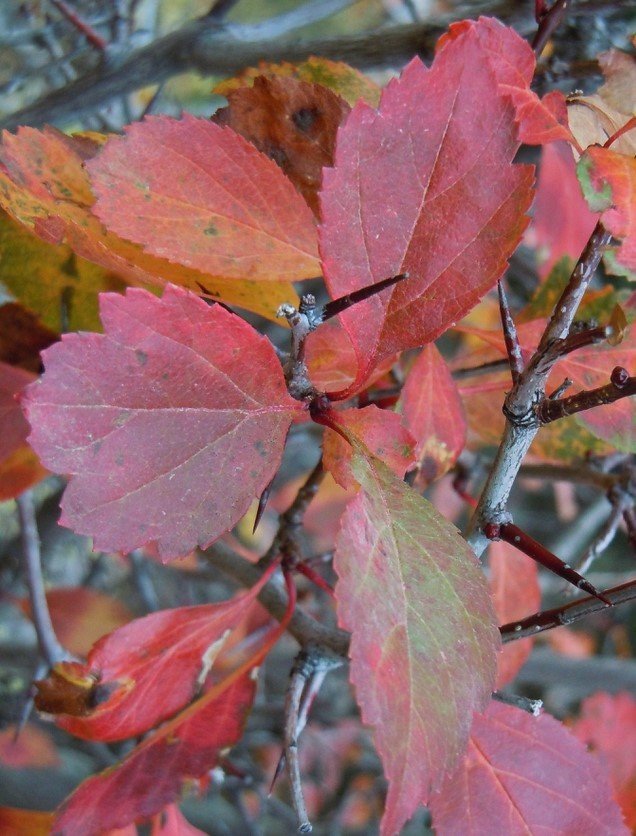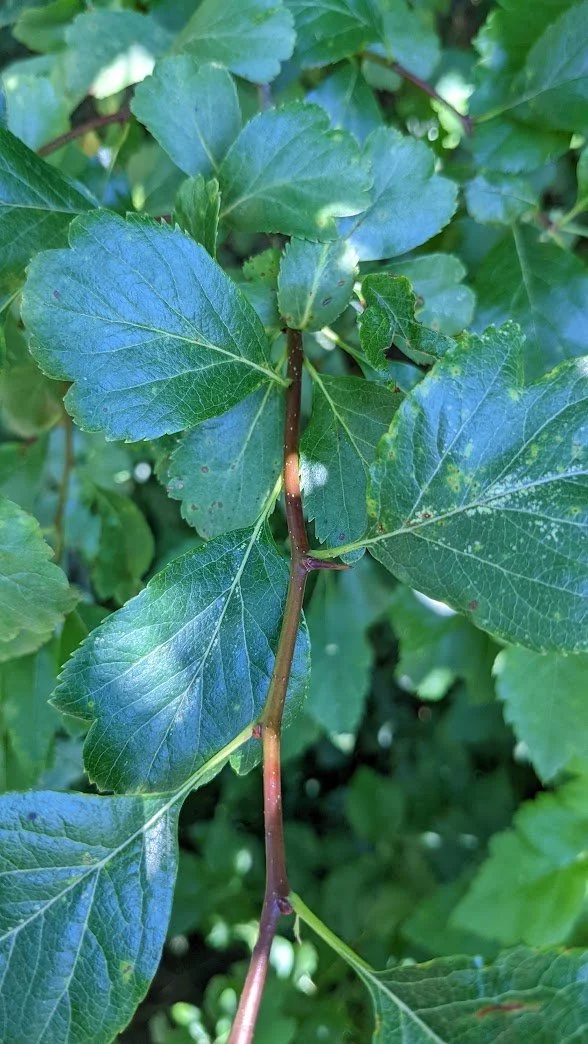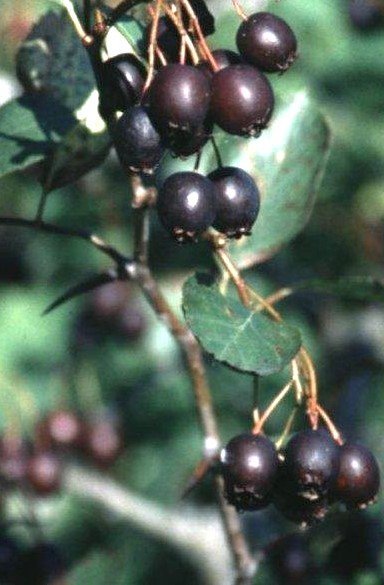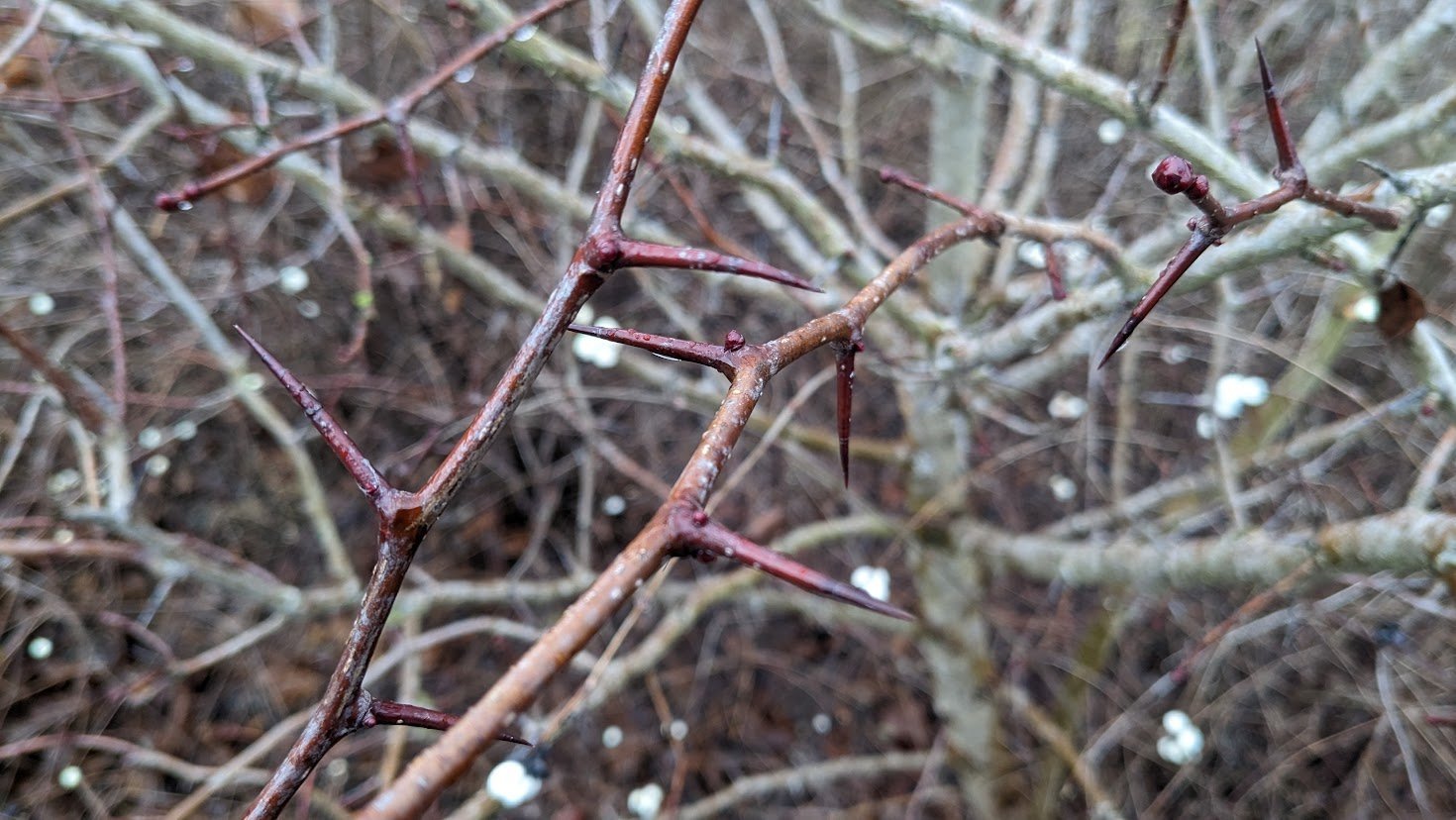 Image 1 of 5
Image 1 of 5

 Image 2 of 5
Image 2 of 5

 Image 3 of 5
Image 3 of 5

 Image 4 of 5
Image 4 of 5

 Image 5 of 5
Image 5 of 5






Crataegus douglasii (Black Hawthorn)
Not to be confused with the weedy European hawthorn, Black Hawthorn is a hard-to-find native deciduous tree (or sometimes in shrub form) with edible and medicinal uses. Super for hedgerows or any space where they can create a habitat-rich border. Its typical form is low and spreading and often forms thickets in the wild. Trees grow 3-20 ft. tall in sun to part shade and will tolerate any type of soil.
The clusters of white flowers produced in early spring form edible purple-black berries providing food to many species of birds and mammals. Additionally, the leaves are a food source for swallowtail butterfly larvae.
Noteworthy for the striking sizable 1-in. thorns on its branches, this tree works well as a barrier hedge, especially mixed with other hedgerow plants. Its fall color is attractive and the shiny black fruits can persist for long periods of time. Other landscape uses include its fire tolerance and as a soil and streambank stabilizer. Deer will browse branches, so young trees will need protection in areas with heavy deer populations.
Not to be confused with the weedy European hawthorn, Black Hawthorn is a hard-to-find native deciduous tree (or sometimes in shrub form) with edible and medicinal uses. Super for hedgerows or any space where they can create a habitat-rich border. Its typical form is low and spreading and often forms thickets in the wild. Trees grow 3-20 ft. tall in sun to part shade and will tolerate any type of soil.
The clusters of white flowers produced in early spring form edible purple-black berries providing food to many species of birds and mammals. Additionally, the leaves are a food source for swallowtail butterfly larvae.
Noteworthy for the striking sizable 1-in. thorns on its branches, this tree works well as a barrier hedge, especially mixed with other hedgerow plants. Its fall color is attractive and the shiny black fruits can persist for long periods of time. Other landscape uses include its fire tolerance and as a soil and streambank stabilizer. Deer will browse branches, so young trees will need protection in areas with heavy deer populations.
